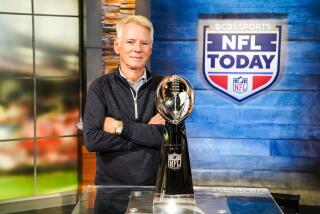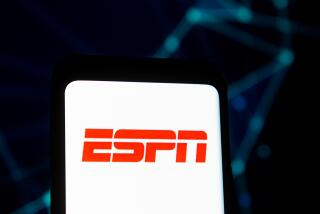COUNTDOWN TO 2000: A day-by-day recap of some of the most important sports moments of the 20th century. / SEPT. 7, 1970 : Fledgling Network Sends Sports Fans Into Orbit
- Share via
In the beginning, cable TV began as a way to deliver clear-picture television signals to remote areas where over-the-air broadcast signals were weak or obstructed by the terrain.
So pictures were delivered over cables strung on telephone poles, and later put in the ground.
In the early 1970s, communication technology made it possible to beam dozens of TV signals from satellites to any cable company with receiving stations.
In 1978, TV executive William F. Rasmussen observed that an RCA satellite had been in orbit since 1975 and had only two-thirds of its transponders signed.
Realizing he could build and lease his own receiving stations, it then occurred to Rasmussen that there was a market out there that had never been tapped in television:
*
Sports junkies.
Twenty years ago today, ESPN went on the air.
As Rasmussen’s son, Scott Rasmussen, told Sports Illustrated: “What we’re creating here is a network for sports junkies. This is not a network for soft-core sports fans who will watch an NFL game, then switch to the news.
“This is a network for people who will watch a college football game, a wrestling match, a gymnastics meet, a soccer game, followed by an hour-long sports-talk show.”
Across America, couch potatoes rejoiced.
*
Also on this date: In 1982, former National League most valuable player Ken Boyer died of lung cancer. He was 51. . . . In 1911, a remarkable pitching matchup of future Hall of Famers: Philadelphia’s Grover Cleveland Alexander, 24, vs. Boston’s Cy Young, 44. Alexander won, 1-0.
More to Read
Go beyond the scoreboard
Get the latest on L.A.'s teams in the daily Sports Report newsletter.
You may occasionally receive promotional content from the Los Angeles Times.










